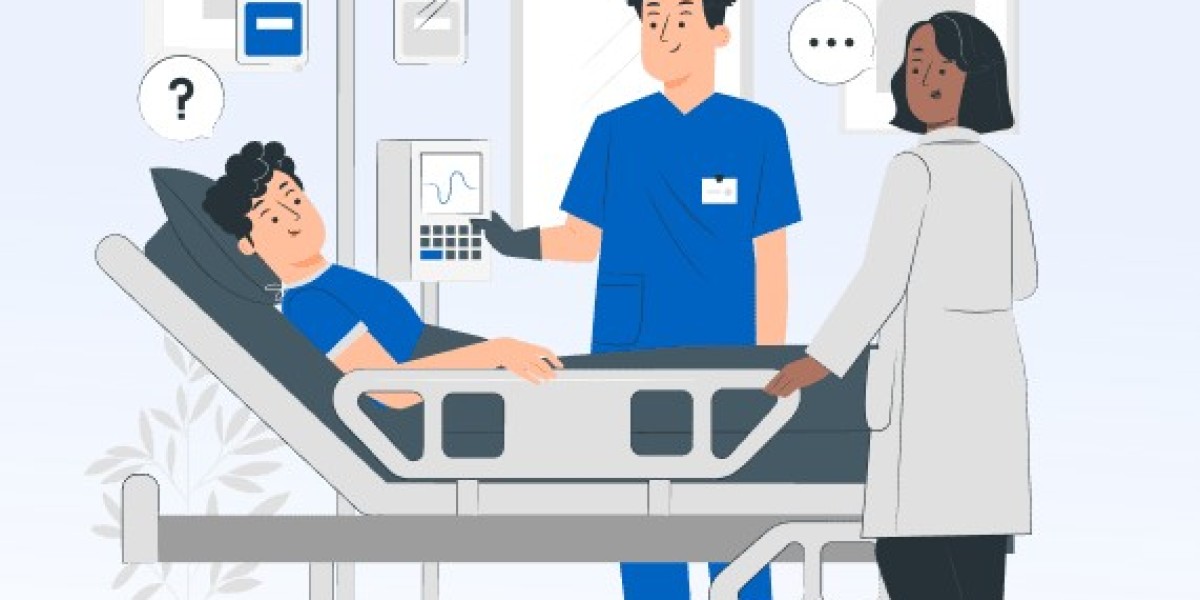troduction
In the ever-evolving landscape of healthcare, technology is reshaping the way we care for patients. Remote Patient Monitoring (RPM) software development stands at the forefront of this revolution. This article explores the exciting world of RPM software, unveiling its potential to transform healthcare delivery. We'll examine the benefits it offers, the challenges it faces, and the innovative advancements paving the way for the future of patient care.
The Surge of Remote Patient Monitoring Software
Remote Patient Monitoring (RPM) software is ushering in a new era in healthcare. It empowers healthcare providers to remotely track and manage patients' health, liberating them from the confines of traditional, in-person care. This technology is particularly transformative for individuals with chronic conditions, offering continuous, real-time monitoring and highly personalized healthcare.
Benefits of Remote Patient Monitoring
Elevated Patient Care: RPM software allows healthcare professionals to monitor patients' health around the clock, facilitating timely interventions and more effective care.
Patient Empowerment: Patients become active participants in their healthcare journey, closely monitoring their vital signs and symptoms. This leads to a more informed and proactive approach to their health.
Preventive Healthcare: Continuous monitoring enables the early detection of health issues, potentially reducing hospitalizations and healthcare costs.
Cost Efficiency: By reducing the need for frequent in-person visits, RPM software can result in substantial cost savings for both patients and healthcare systems.
Remote Care: Patients can receive high-quality care from the comfort of their homes, bridging the gap for those in remote or underserved areas.
Challenges in Remote Patient Monitoring Software Development
Despite its array of benefits, RPM software development faces several challenges:
Data Security: Protecting sensitive patient data is paramount, necessitating the implementation of robust security measures to prevent data breaches.
Interoperability: Ensuring seamless communication between various devices and software systems is crucial for the success of RPM software.
User-Friendly Design: RPM devices and software must be user-friendly, catering to a diverse patient population, including older adults who may not be tech-savvy.
Regulatory Compliance: Adhering to healthcare regulations and standards is a complex but essential aspect of RPM software development.
The Bright Future of Remote Patient Monitoring
The world of remote patient monitoring software is in a state of perpetual innovation, with various advancements shaping its promising future:
IoT Integration: The Internet of Things (IoT) facilitates the seamless connection of various medical devices and sensors, enhancing data collection and analysis.
Artificial Intelligence: AI-driven algorithms are becoming more sophisticated, offering predictive analytics and early detection of health issues.
Telemedicine Integration: The fusion of RPM software with telemedicine platforms enables real-time communication between patients and healthcare providers.
Wearable Technology: Smartwatches, fitness trackers, and other wearable devices play a pivotal role in making remote patient monitoring more accessible and user-friendly.
Patient Engagement Tools: User-friendly patient portals enable patients to access their health data, monitor their progress, and communicate with healthcare providers.
Conclusion
Remote patient monitoring software development is reshaping the healthcare landscape. With benefits like elevated patient care, cost efficiency, and patient empowerment, RPM software is a fundamental component of modern healthcare. While challenges such as data security and interoperability persist, ongoing advancements in IoT, AI, and telemedicine integration promise a bright future for RPM. As technology continues to evolve, remote patient monitoring is poised to be a driving force in improving the quality and accessibility of healthcare for patients around the world. It's an exciting time to witness the transformation of healthcare through the lens of remote patient monitoring software.



